
The School’s Fredrick B. Powers Commons get a dose of modern comforts through the Building Fund
By Katie Gerhards
On the second floor of Rennebohm Hall, home to the University of Wisconsin–Madison School of Pharmacy, students quietly study at a laptop bar along a sun-bathed window, overlooking a scenic pond and sprawling health sciences campus. Some plan a project on a wheeled whiteboard, while others group together in lounge chairs.
The Fredrick B. Powers Commons offers students a peaceful reprieve to regroup between courses, review material, and collaborate with peers, as it has since it was first created in 2005.
Earlier this year, the Commons underwent a renovation to update the space with new amenities, including more comfortable and flexible seating, colorful soundproofing panels on the walls, a moveable TV and whiteboard, and added outlets for charging.
“The new environment is so refreshing to be in and having a great view of the pond to look out at during study sessions is so relaxing,” says fourth-year PharmD student Sean Baltes. “This remodel allows students to have a great study spot located within the school of pharmacy.”
“I couldn’t be more pleased to see the fund used to provide space and amenities for students.”
—Thora Vervoren
The improvements in the space were made possible by alumni and donors of the School of Pharmacy, through the same fund that yielded Rennebohm Hall itself: the Building Fund.
“I couldn’t be more pleased to see the fund used to provide space and amenities for students,” says Thora Vervoren (BS ‘53), one of the fund donors.
Building Rennebohm
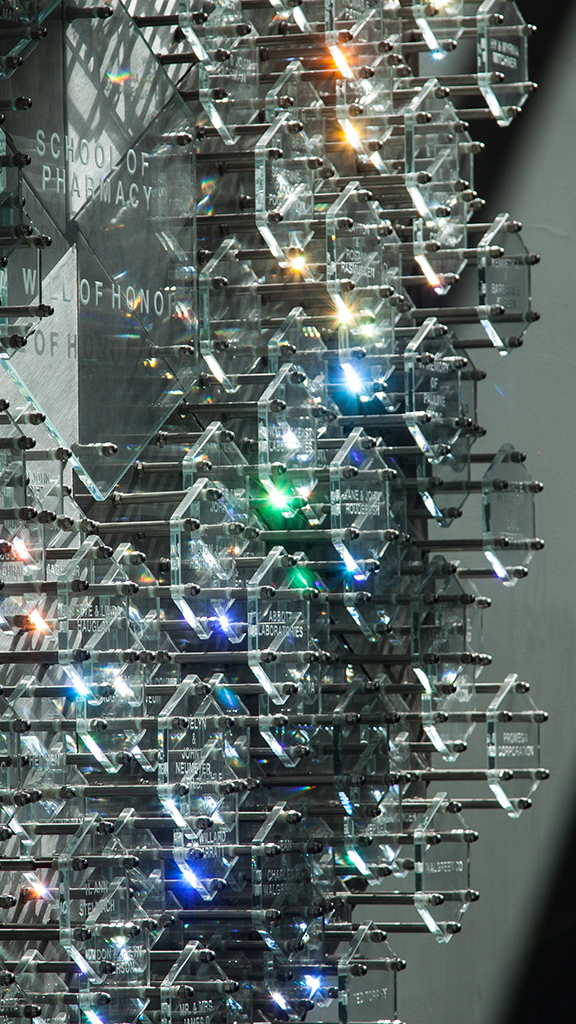
Created in 1992 under acting Dean Kenneth Connors, the Building Fund aimed to get the School its own space — before Rennebohm Hall opened in 2001, the School operated out of South Hall in the late 1800s, moving briefly to North Hall and then settling into Chemistry Hall (now known as Chamberlain Hall).
“The School desperately needed more space for laboratories, classrooms, and offices, as well as space for students to gather,” says Vervoren, who was on the School’s Board of Visitors at the time. “We needed this to attract and retain faculty and continue to maintain a high-academic-level student body. We also needed to increase the size of our enrollment to meet the increased need for pharmacy practitioners.”
When Mel Weinswig became dean of the School of Pharmacy in 1995, he nurtured the campaign and connected with key players in the field, such as Steve Skolaski, president of the Rennebohm Foundation, and Marty Stein (BS ’59), who was then the owner of Stein Pharmacies across Madison and Milwaukee.
The goal of the fund was to raise $15 million, and if the School reached that benchmark, the state of Wisconsin agreed to kick in $30 million to pay for the $45 million construction.
The Rennebohm Foundation became the largest donor to the fund and reached out to individuals around the state who might be interested in donating.
“Many of our students worked in Rennebohm’s, so it was a very nice gesture on their part,” says Weinswig.
He and staff also hosted fundraising events locally and as far as the coasts to connect with alumni at some of the nation’s largest pharmaceutical companies — alumni like David Sanders (BS ’52), who worked for giants like Pfizer, Sandoz, and Bristol Meyers Squibb. Sanders, who also created the Hammel-Sanders Professorship, became the largest individual donor to the fund, followed by Stein.
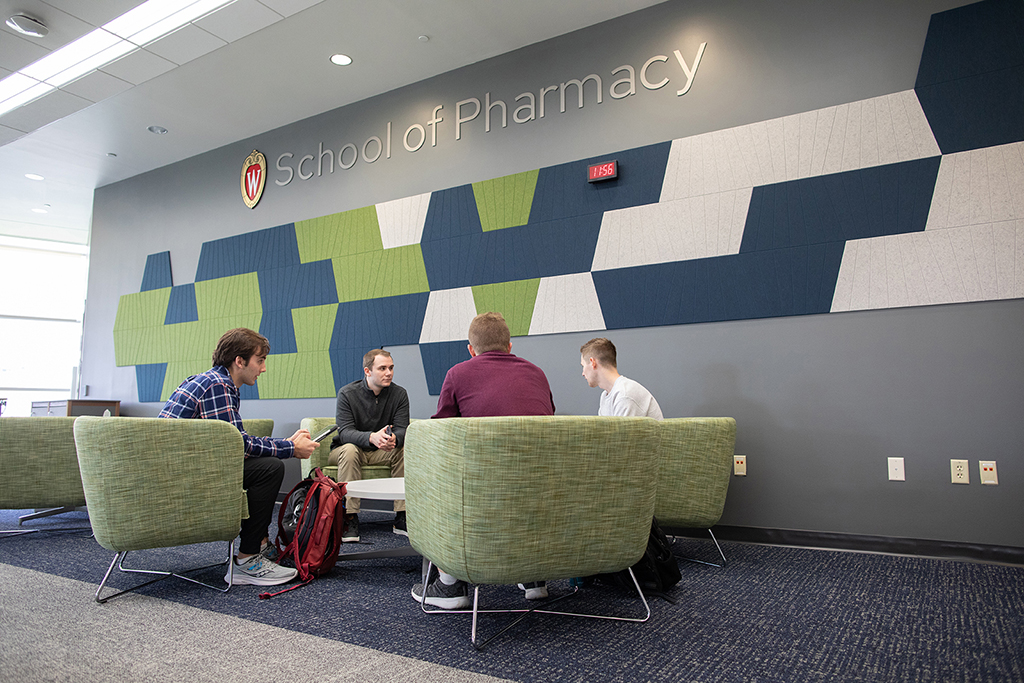
Pharmacists across Wisconsin also ardently supported the effort.
“The pharmacists were amazingly generous; even pharmacists from small towns as well as smaller hospitals gave very willingly,” says Weinswig. “We were able to surprise even the chancellor at that time with how the money was coming in.”
Within three or four years, Weinswig said they had met — and exceeded — their goal.
“The building fund grew to over $15 million because people did give; it was very, very generous,” says Weinswig. “That’s why there’s still money in that account.”
Near Rennebohm Hall’s south entrance, an enduring art installation bears the names of the many donors who each gave more than $10,000.
“There’s a loyalty that you find among the pharmacists of Wisconsin who graduated from the School,” he says. “Loyalty and hope for the future were there.”
Creation of the Commons
After Rennebohm Hall was opened in 2001, featuring a prominent pharmaceutical library, the surplus money remaining in the fund served to support future projects in the building. These funds came into use just a few years later, after the Health Services Learning Center (HSLC) was built across the street in 2004.
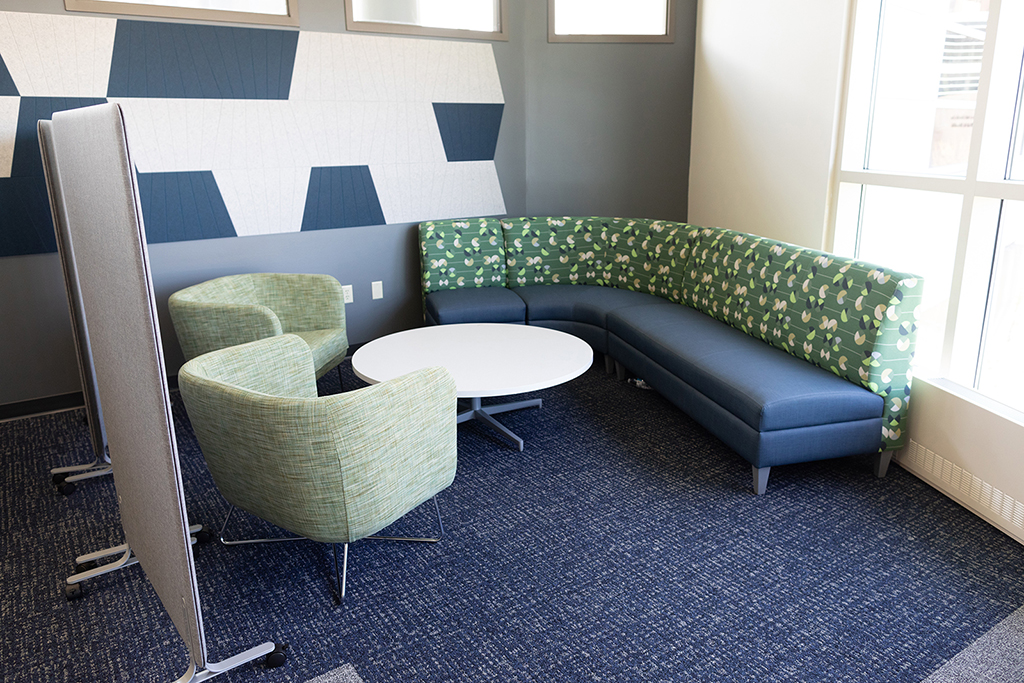
“When they opened the HSLC, they consolidated three libraries there, including ours, which left around 12,000 square feet vacant in Rennebohm Hall,” says Jeanette Roberts, who became dean of the School of Pharmacy in 2003.
Half of the space of the former library was used for Student and Academic Affairs offices, to be more centrally located for student access, and the other half became the communal student area that it is today.
“The library space was used quite a bit for studying, so I wanted to replace that with other spaces for students to study quietly,” says Roberts. “But the space is also for so much more than studying.”
The Commons was designed with social gatherings in mind, with a kitchen in the back and a window through which to serve food and drinks. Small reservable rooms offered private study areas that students could use to gather for group projects or study sessions.
It was an effort that pulled UW–Madison students together. Students from the School of Human Ecology drew up potential designs for the space, and a student-influenced naming contest led to the space bearing the name of the founding director of the UW’s Department of Pharmacy, Frederick B. Powers.
Modern comforts
The remodel of the Commons was largely inspired and driven by School of Pharmacy students, starting with a scavenger hunt of sorts.
“They went to various libraries on campus to check out the layouts and the furniture, coming up with ideas,” says Karen Kopacek, associate professor in the Pharmacy Practice and Translational Research Division and associate dean for Student Affairs. “They took pictures and put together their recommendations for updates to the Commons, which then went to several groups that have heavy student representation.”
The students also pushed to transition the Commons from a quiet study space to more of a community space, so the remodel also took that consideration to heart, says Liz Funk Smith, associate dean for Administration.
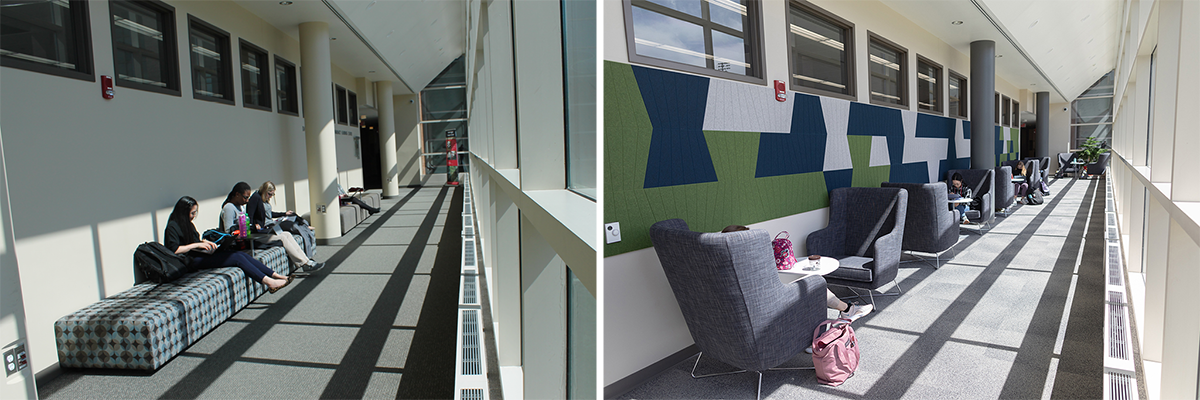
“One of the best changes is that the Commons is no longer a silent study space,” says Baltes. “It allows for great group collaboration and aids in my studying as I exchange ideas with classmates.”
The result of these efforts is a vibrant and inviting space designed to meet the flexible needs of studying students.
“The students love the bright colors and all the comfortable seating; they now feel like they have a place for group work and just to relax in the new chairs,” says Kopacek.
Booths, movable tables, and lounge areas with high-backed chairs provide spaces for students to gather and study. A laptop bar adds seating along a wall of windows, and high tables around structural posts provide added spaces for individual work.
“The table along the windows has always been a popular spot for students; they used to pull chairs over all the time,” says Kopacek. “Now we’ve got a nice laptop bar and comfortable chairs for them to be able to sit and gaze out at the pond and take advantage of all that sunshine.”
Additional seating was also added directly outside of the Commons, in a sun-filled hallway, which has become another popular place for students, faculty, and staff to enjoy their lunch.
“We also brought in some marker boards that are movable so people can take those throughout the room as they’re with their groups to write on them, and we updated the glass boards in individual, reservable study spaces,” says Funk Smith.
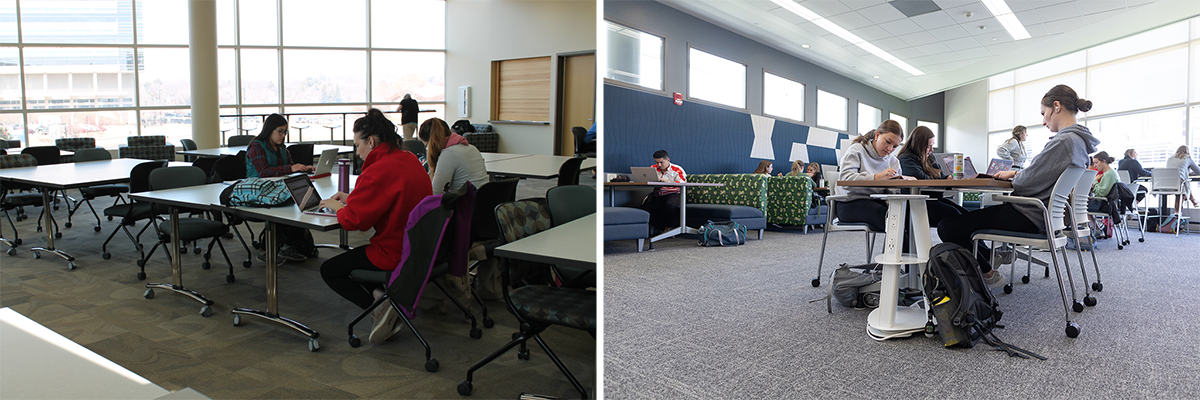
But the most popular feature so far: a plethora of outlets, added along the walls, on the laptop bar, around the high-top tables, and on power towers throughout the space.
“That was the biggest concern students had and why they didn’t use the Commons much for studying,” says Kopacek. “When the space was new, students still used paper copies of notes to study, but as technology has evolved, their power needs have grown exponentially.”
The renovated Commons opened in April 2024, and the impact on students is already clear.
“Going into finals week, there were a lot more students spending time in there than we had had in previous years,” says Kopacek. “I saw that as a sign of success.”
The Building Fund continues
The Commons hasn’t been the only use of the Building Fund since Rennebohm Hall was completed. Funds are available each year for maintenance and small projects, and a donor recently made a new contribution specifically geared toward updating a conference room and kitchenette in the research tower, with more similar projects planned, Funk Smith says. Administration is also exploring using the funds to improve signage and wayfinding in the School.
As Rennebohm Hall approaches 23 years, the Fund provides an ongoing opportunity to keep classrooms, study spaces, and even learning technologies up to date.
“If the School is going to attract the best and highly motivated students, we need to provide an environment which gives them opportunities to not only achieve an excellent academic foundation but also provides social and leadership skills to prepare for life in the professional world,” says Vervoren. “Providing enhanced areas for students to interact with each other, develop relationships, and form lasting friendships is essential to the accomplishment of this goal.”
